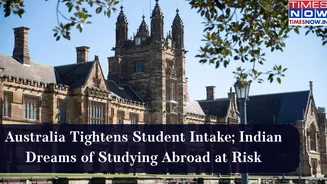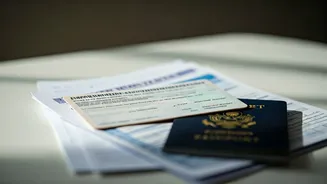The Australian federal government has recently reinforced its decision to impose a cap on international student enrollments at universities. While international students
are significant to the country's economy, according to Education Minister Jason Clare, HEIs must prioritise the locals and operate within viable limits. While speaking to Sky News, Clare asserted that Australians should make up more than 50% of total enrollments in HEIs. “There’s nothing more important for Australian universities than educating Australians,” he added. The decision follows a surge in international students as they outnumber Australians in prestigious universities, including the University of Sydney, Murdoch University, and RMIT University. The ceiling, which was first announced in August 2024, imposes an annual restriction of 270,000 new international student enrolments for 2025. According to a BBC report, the Australian government set a limit for each university or higher education institution on how many international students they can enroll. Over Half of Students at Key Universities Are from Overseas According to the THE report, government statistics indicate that international students at the University of Sydney were recorded at 51% in 2024 (up from 49% in 2023 and 43% before COVID-19). Murdoch University reported a higher percentage at 57%, while RMIT University's enrollment reached above 50% last year. Have a look at the international enrollment at Australian universities below:
An analysis of 2017 annual reports for 10 of Australia’s richest universities found that “an average of 30 per cent of their income came from overseas students, up from 26 per cent in 2016 and 24 per cent in 2015,” according to a Times Higher Education report. An in-depth survey of four institutions discovered that more than one-third of their revenue comes from foreign students.
An Australian government report further indicates that the total number of students (domestic and overseas) enrolled at higher education providers has increased by 4.7 per cent from 1,600,563 in 2023 to 1,676,077 in 2024. This is driven by a 17.7 per cent increase in onshore overseas students from 409,249 in 2023 to 481,851 in 2024. Onshore overseas students comprise a larger share of all onshore students (i.e. domestic and onshore overseas), increasing to 31 per cent in 2024 from 28 per cent in 2023.
Why Australia Is Imposing the Cap
Now that the government is imposing restrictions on the number of students, it maintains that the measures taken aim to restore international student migration to sustainable, pre-COVID levels since the present enrollments are significantly above that benchmark.
Restoration of International Students to Pre-Pandemic Levels
When questioned on whether he agrees that more than half of the institution’s enrolments were international, Clare said, “International education is important for Australia. It provides investment, creates jobs, and helps build our connections to the world. But there’s nothing more important for Australian universities than educating Australians. That’s why we’ve made it clear that international student numbers must be set at sustainable levels. We reduced them last year, and we want to make sure that future growth happens in a managed way."
Commenting on the government’s viewpoint on locals forming the majority on campus, Clare said, “It should be more than 50 per cent of students at universities being local students."
To Curb Malpractices & Restore Integrity in International Admissions
As per an Indian Express report, officials have argued that the expedited post-pandemic growth, especially at private vocational colleges, has resulted in turbulent growth, with some accused of indulging in malpractices, including admitting students who lack language skills or academic aspirations. Therefore, the restrictions aim to impose tougher English language requirements, stricter visa rules for repeat students, and the quashing of ‘dodgy’ education providers.
Addressing the Housing Crunch
Apart from these, the housing crisis is frequently associated with HEIs’ access to higher international enrolment allocations with their ability to build student accommodations.
While talking to Sky News, Clare said, “If you want additional international students allocated to your universities, then we need to see evidence of two things. One, that you’re building more housing because we need more housing. But two, that you’re diversifying so that international students aren’t just coming from one country, but from a number of different countries around the world."
How Federal Government's Move Will Impact Indians
Due to the government’s move to limit international students, Indians will be impacted in the following ways:
- There will be lesser availability of seats for new international students — which implies increased competition for Indian students looking forward to pursuing higher education in Australia.
- Seats in several institutions or programs may fill up faster due to available quotas, which will again put significant pressure on Indian students.
- Additionally, an increased cost of visas and tougher requirements may increase the financial burden on Indian families.
- Because of lower chances of getting into an Australian university, Indians may look for alternative study destinations or shift preferences to institutions/sectors exempt from the cap.
- Those who are already a part of pathway programs (like from Australian high school to university) are expected to have better continuity due to a few exemptions.
Recommended | From Student Visa to Job Visa: How Indians Can Move to Germany

















